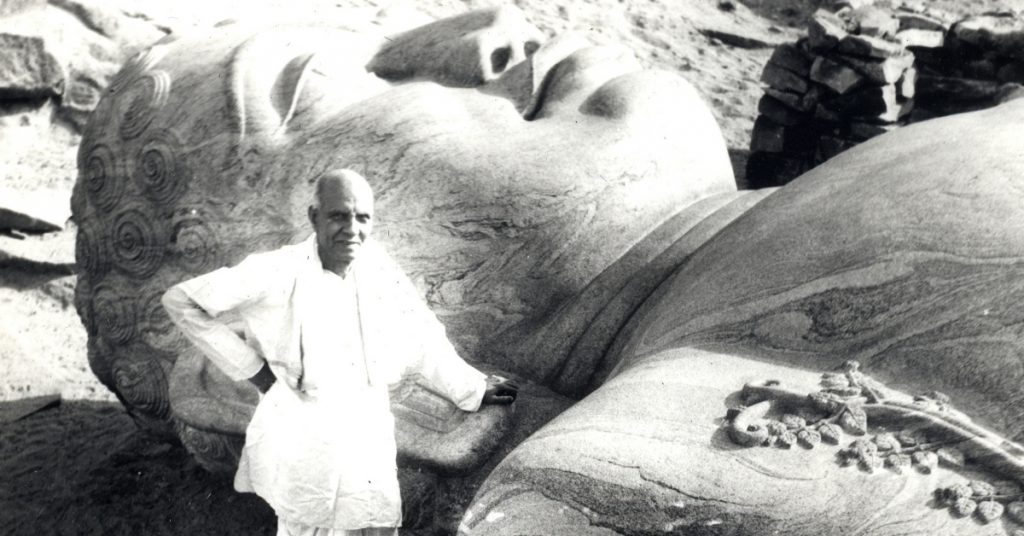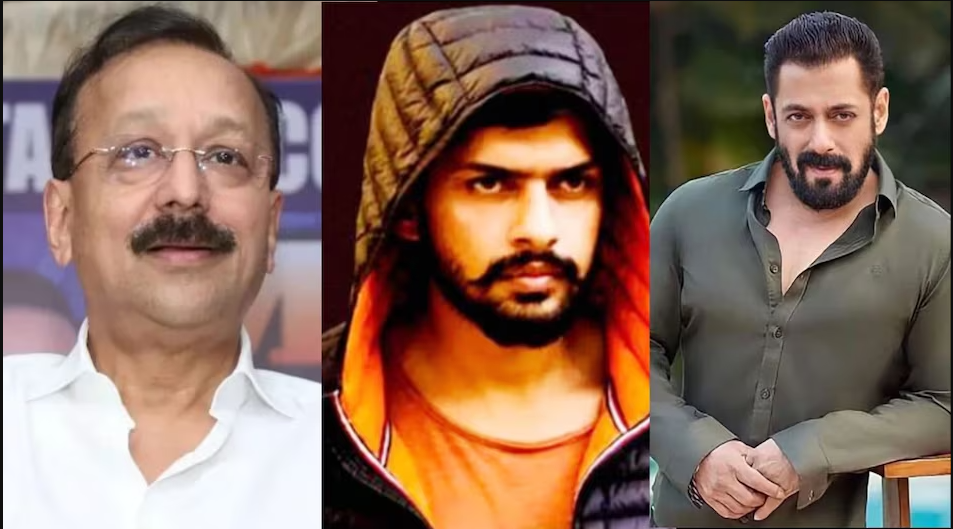
This Article is contributed by Ashwini Jain from Maha Mastakabhisheka Media Committee, Dharmasthala.
Dharmasthala is all set to be anointing the magnificent 39 feet Bahubali colossus yet again, at the 4th Maha Mastakabhisheka ceremony from 9th of February. As we eagerly gear up for the ceremony, we also recall the highly intense and historic journey of the statue from vision to reality, for it is always a virtue to be revering the roots.
It feels like picking up droplets from the Pacific, but here goes. The legend of establishing a Bahubali colossus at Dharmasthala that occurred from the 1960s – 1970s is a haven of miracles, but we present to you the most memorable, most incredible events from the saga that makes us want to believe that the story was scripted by some metaphysical force.
Sure, the time has stood witness to several incredible instances like this one; but that is just a testimony of the strength of collective human will, which can create wonders when converged towards a purpose. Here is a reminiscence of the 12 most awe-inspiring instances from the legend that makes us wish we lived to experience them!

There Were Hardly Any Blueprints
The Bahubali of Dharmasthala is a wonder of the modern world, created nearly 400 years after the last colossus at Venur. The previous monoliths left hardly any blueprints or strategy documents to draw inferences from, which meant that the statue had to be, quite literally, started from scratch. No one had any concrete idea about how such a massive statue would be sculpted, transported or erected. However, Late Shri Rathnavarma Heggade made a bold decision to make it happen come what may, and a handful of his confidants ensured his support.
It was saddening for everyone when he passed away before his vision was brought to form. His illustrious son Dr. D Veerendra Heggade succeeded to his position at a tender age of 20. At 20, Dr. DV Heggade picked up the colossal reverie from where it was left and shouldered it all the way through to completion.

A Salt Sacrifice for 6 Years
The sculptor who sculpted this statue was 64 years old when he was first approached. Renjala Gopala Shenoy, despite hailing from a merchants’ family, held an intense interest in sculpting and had earned fame in the same field. Also, being a Konkani, he had to put in extra efforts to comprehend the mandates of sculpting a statue for the Jain community. In reverence to the bequest he was fulfilling, Renjala Gopala Shenoy completely sacrificed salt for a span of 6 years – until the statue was completed!

Sculpted Out Of A 100 Feet Tall Stone
The statue took shape through 6 years at Mangalapaade at Karkala, which was the very spot where the Bahubali colossus of Karkala had come to life. This spot was particularly auspicious – the Karkala bahubali overlooks it, the sculptor found a perfect 100 feet tall stone to begin with and when the laborers had to dwell in the area, they dug up a well and found water even the midst of rock! For 6 years, 25 laborers worked on the statue, most of whom were migrants from Tamil Nadu handpicked by Renjala Gopala Shenoy.

From Karkala to Dharmasthala
The nail-biting challenge came when the statue had to be transported to Dharmasthala. There was neither any technology nor a vehicle that could complete this task back then as easily as it could be done today. Mangatram Bros, a Mumbai based company designed a special trolley that weighed 20 tonnes and was ferried over 64 wheels with a 250 HP engine for this very purpose, which became an attraction in itself.
While the first-timers wowed over the scale of the trolley, the ones closely associated with the statue actually were skeptical! The vehicle was as large as it could possibly get, but many were left wondering if the 180-ton responsibility could be entrusted on those heavy-metal shoulders.

A Carnival Of Struggles
A test drive was to be made in order to evaluate the reliability of the Mangatram trolley. A trial trip was done as it transported a ‘Bramhastamba’ (a pillar of religious importance) to Dharmasthala in three days. As it came back after this trip, 16 tyres were damaged and the next big trip was completed with the remaining tyres only! The journey of Bahubali from Karkala to Dharmasthala was a carnival in itself and lasted for 23 days with people and communities celebrating this great expedition with unmatched enthusiasm.
An Anonymous Postcard
A very interesting event took place when the statue was loaded on to the vehicle at Karkala. Firstly, it took days together to load the statue; but the real challenge awaited when the vehicle had to cross an upturn at Mangalapaade to reach the main road. The vehicle simply did not move. For 6 long days, no stone was left unturned in trying to make the vehicle cross the uphill. Wooden planks were installed, elephants were made to pull the vehicle, the engine power was increased – but the truck not so much as budged.
When this news was published in local newspapers, Dr. Heggade received an anonymous postcard. Someone had read the news and had a simple suggestion to make- he/she wrote that they try rubbing inflammable ash (Raala, as we know it in Kannada) to the tyres of the vehicle and then move it.

Having tried everything and on the verge of a breakdown, Dr.Heggade saw no harm in trying this technique out as well. He sent for someone to get enough Raala, which was applied generously to the tyres of the vehicle, and the engine started. Believe it or not, it worked. After six days of painstaking struggle, an anonymous letter suggesting a simple technique saved the day from an obstacle that had taken everyone by the gut!
21 Elephants And Veerendra Heggade
Late. Shri Rathnavarma Heggade, when asked how he would transport the statue from Karkala to Dharmasthala, had amusingly answered stating he would make use of elephants for the task if nothing else worked out. In honor of that foretelling, Dr. D Veerendra Heggade, his son who completed his half-realized dream hired 21 elephants from the forest department during the transportation of the statue.
That wasn’t for heaving the statue, but only so that the elephants could accompany the statue bound to the trolley so that his father’s vision of transport too would come true. Back then, it was a huge deal for an individual to hire elephants from the forest department – and bringing together 21 of them was nothing short of a record!

When Marathi Laborers Came in
Mangatram also brought along with the trolley a number of Marathi laborers, who made for a stare-worthy sight at the typical South Indian setup from Karkala to Dharmasthala. Their dhoti and Nehru-topi attire, their loud, rhythmic and collective chants when they performed a physical task and their incomprehensible yet appealing Marathi added to the surreal aura of the entire process!
Aid From Central Railway Ministry
When the trolley had to pass through bridges at five places along the way, the existing bridges were not used owing to security reasons. Believe it or not, entirely new bridges were constructed parallel to the old ones at all five spots, and the Central Railway Ministry and the military were the ones to make this happen.
The railways and military were previously known to coordinate to construct roads and bridges at places where large ammunition and army trucks were to be transported. The same kind of techniques was used here and bridges were constructed from steel pillars and sandbags, which were later dismantled.

Way to Rathnagiri
When the statue reached Dharmasthala, a wildly uncertain task was entrusted on the shoulders of the trolley driver, whose name was Shekhar. It was agreed by everyone that the statue must make its way uphill Rathnagiri only after it paid its respects to the reigning deity of Dharmasthala, Manjunatha Swamy.
The trolley was taken a full circle around the temple through an impossibly narrow pathway, even though the sharp L-turns where everyone quite literally held their breaths. Despite the seemingly unfeasible possibility, the driver of the trolley facilitated the notion of the statue paying respects to Manjunatha Swamy.

Two More Years
Then came the next big challenge, which was to pull the giant baby to his feet. Bahubali had to be erected, and there was no model for that to draw inspiration from either. It took two years of deliberations before Dr. Heggade was finally convinced that an idea would work out. Meanwhile, the finishing touches for the stone sculpture were completed.
The installation of the statue was done by Hindustan Works, who installed railway tracks from the foot of the statue to the exact spot of its erection, framed the monolith within an iron scaffolding, and pulled it up steadily using ropes attached to cranes, pulleys, and winches. To make sure that the statue wouldn’t crash to the ground in case of a mishap, steel pillars were introduced at the bottom as it was lifted higher. After an entire day’s work, the statue was brought to a vertical position and later affirmed to its place with a 14 feet tall platform.
The Consecration Process
After all this hard work and success, the decade long dream envisioned by Late. Shri Rathnavarma Heggade was brought to a grand reality. However, until now it was just a statue; it had to be consecrated in order to be credentialed as Lord Bahubali. Two of the most prominent Jain ascetics of the time, Acharya Shri Vidyananda Maharaj and Acharya Shri Vimalasagara Maharaj accomplished this requirement. They were ferried to the eye level of the statue over a cradle, where they drew the eyesight for the statue and transformed it into a divine idol, like its counterparts around the state.

The story of the establishment of Bahuabli at Dharmasthala could be told and retold for generations to come, and shall never grow old. The very decision to recreate history on a scale as large as the statue was in itself a historic moment at Dharmasthala. In fact, the list of instances that can make you enthralled about Bahubali would practically go on forever, but what towers over all that intensity in thoughts and actions is the statue itself – overlooking the world and conveying that it sees it all but stays detached nonetheless.
If You don’t want to miss our next Post then Like and Follow MetroSaga on Facebook and Instagram or simply download our Android App
You can also Subscribe to MetroSaga for newsletters.






















